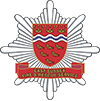In order to ensure we deliver the local and national priorities, the Purpose and Commitments are delivered through a number of key documents within the organisation.
This assists our employees to understand how they contribute, where they fit and what they must do to achieve our purpose and commitments and, ultimately, our vision.
Our planning documents are interlinked and contain specific actions as to how we will achieve our targets.
Community Risk Management Planning (CRMP)
Community Risk Management Planning (CRMP) ensures that we understand the risks faced by our communities and that we are taking appropriate action to reduce and to deal with those risks.
Strategies
- Our strategies can be found in our Fire Authority Constitution.
Annual plan
This Plan reports on what we have achieved and what we aim to achieve to meet our aims and objectives for the forthcoming year.
Previous reports are available on request
Medium Term Financial Plan
Having an effective medium-term financial plan makes it easier for an organisation to manage funding fluctuations.
We review our budgetary position regularly and produce a rolling 3-year plan, known as the Medium Term Financial Plan.
The Medium Term Financial Plan provides a focus on both revenue expenditure (day-to-day running costs of providing services) and capital expenditure (long-term investment in infrastructure, like fire engines), as well as setting out our overall financial strategy. Along with the Medium Term Financial Plan publication, we also produce a separate Treasury Management document.
You can find the latest Medium Term Financial Plans by searching our Fire Authority papers or by going to Financial Information | East Sussex Fire & Rescue Service
Directorate Business Plans
Each of our Directorate Business Plans describes in more detail how departments are working to deliver our Corporate Plan.
Performance Reports and Data
Local attendance standards
Whenever you call us in an emergency, your call comes into our Joint Fire Control, which then mobilises the nearest or most appropriate fire appliance, along with any other specialist vehicles/officers depending upon the problem.
The Fire Authority has set the following attendance standards:
- For the first fire engine with an ‘on-station’ response - 10 minutes 70% of the time
- For the first fire engine with an ‘on-call’ response - 15 minutes 70% of the time
These are reported quarterly and can be found in the quarterly performance reports below.
National response times
The Home Office collates information on response times which is published here.
In comparison to all England, fire services classed as significantly rural and our neighbouring fire and rescue services our comparative figures are presented below. Please note ESFRS is classed as significantly rural.
| Average Response times to dwelling fires | Average response times to road vehicles | |
| All England | 7m 52 seconds | 9m 48 seconds |
| Significantly rural fire services | 8m 54 seconds | 10m 59 seconds |
| ESFRS | 8m 14 seconds | 9m 39 seconds |
| Kent FRS | 8m 51 seconds | 10m 54 seconds |
| Surrey FRS | 9m 04 seconds | 10m 43 seconds |
| West Sussex FRS | 8m 49 seconds | 10m 38 seconds |
The files below contains information on all incidents since April 2013.
They are large Comma Separated Values (CSV) data files and you will need a program to be able to use them.
Microsoft Excel would be one choice but a number of other programs can also be used.
Information about using CSV files with Microsoft Excel can be found on the Microsoft Office help website.
